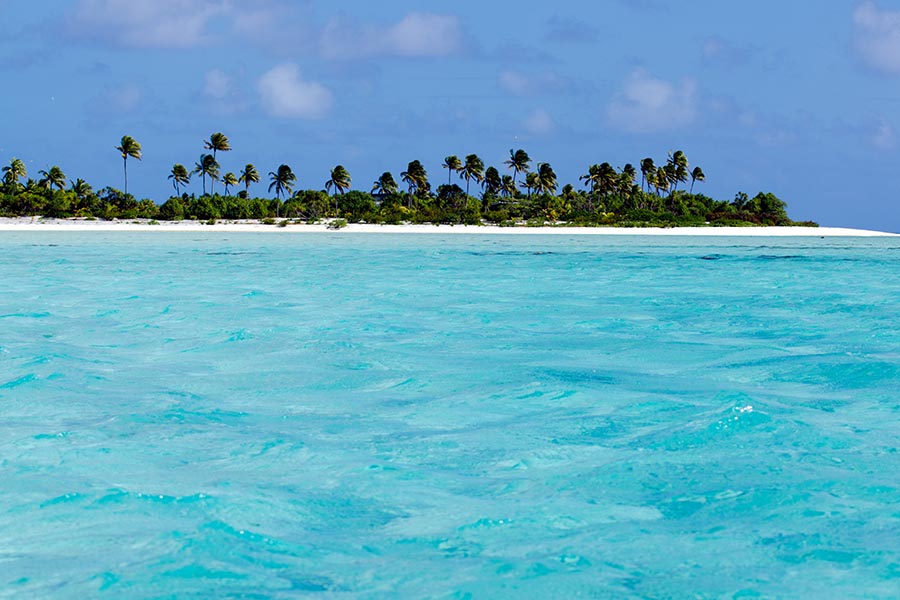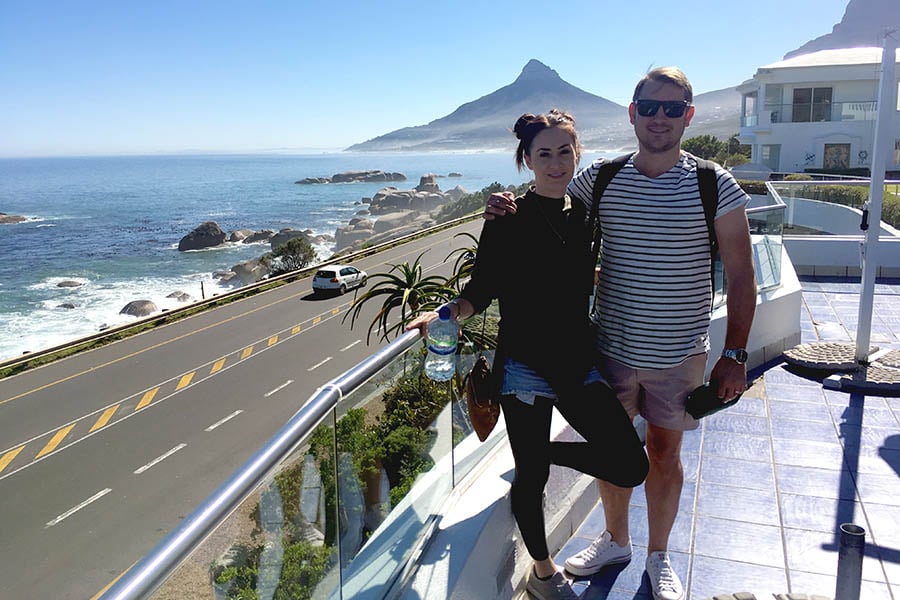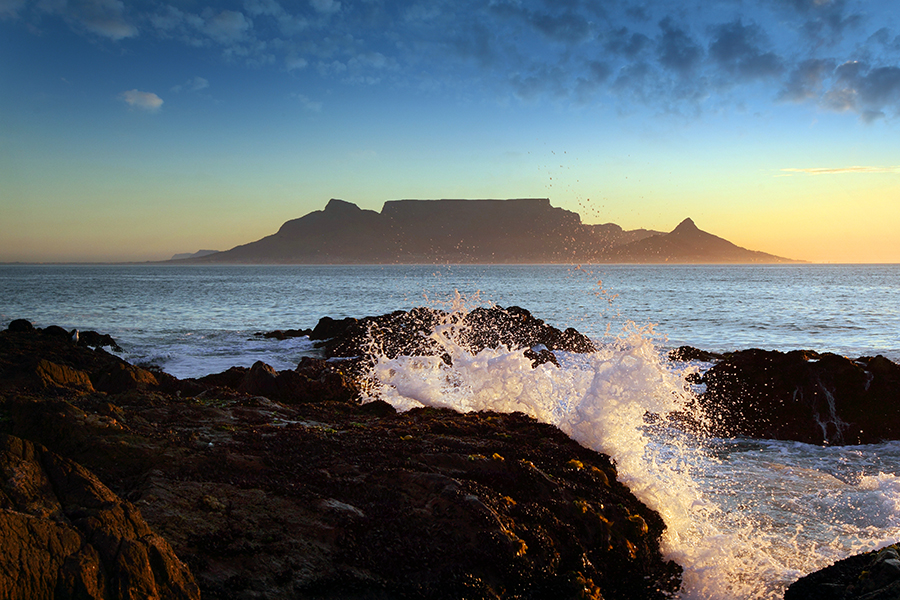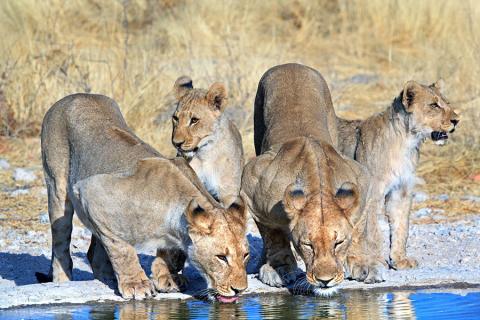
Northern Namibia: secluded safaris, mountainous camps and spectacular sunsets
When I was offered the opportunity to visit Namibia I knew very little about this Southern African country; but having visited South Africa previously, I’d begun to cultivate a love for Africa and was keen to explore further.
I visited in December and the trip I joined was part of the ‘Arid Eden’ route put in place by the Namibian Tourist Board. It’s a journey to the often over-looked and culture rich north-west region of the country. If you took a different route south, you could also explore the Skeleton Coast and the head right down to the southern end of Namibia to see the photogenic Sossusvlei (sand dunes).
To give you an idea of the scale, Namibia is a country double the size of the United Kingdom with a population a quarter of the size of London. This means it’s a very safe place to travel and once you get outside of the few cities, you’ll encounter a county virtually untouched by the modern world.
The drive from north from Windhoek to Etosha National Park
We departed Windhoek the same morning we arrived and embarked on the extremely long drive up to the western part of Etosha National Park.
As we had only a little time for this trip, we spent a lot of time in the truck, so I would recommend that you break the journey with a stop in Windhoek (the capital city), and also add a night in Okaukuejo on the route north, to ensure a more relaxing trip. The road to the north is a straight, tar road, extremely easy to drive on and with no traffic to speak of – perfect for a self-drive.
We stopped in Okaukuejo for lunch on the way and enjoyed a local delicacy, ‘Orik’, a meat farmed in the region and perfect with a fresh salad. After washing the meal down with a glass of Namibian beer (Namibia is famous for its beer apparently – who knew!) we were back on the road for the final part of our drive up to Etosha.
Hobatere Lodge safari camp and a game drive through Etosha

Our first night was spent at Hobatere Lodge; a safari camp located just outside of the western end of Etosha National Park. This lodge recently reopened and provides much needed employment for the local people as well as some fantastic game experiences.
After a much-needed meal and a good night’s sleep we headed out for an early game drive the next morning. Within ten minutes of the lodge, we’d spotted 3 lions relaxing by the watering hole. They seemed unperturbed by our appearance, which meant we were able to get some great photos of them up close – I’d say that was well worth the 5am wakeup call!
Damaraland & the Himba tribe
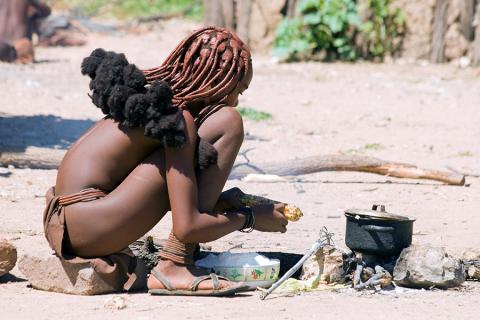
After Hobatere we set off again through Damaraland and into the remote north-west Kunene region of Namibia. This area is most well-known for its association with the Himba tribe; thought to be the last remaining nomadic people of Namibia. The tribe are recognisable by the red colour they wear on their hair and bodies, a paste made from butterfat & ochre pigment.
The climate in this region is red-hot and the landscapes are arid and extremely dry. It isn’t unusual to drive for over 3 hours without seeing another person or vehicle, besides stopping at the local ‘gas station’; one man on a scooter and a lone pump in the middle of nowhere.
An encampment in the desert
Late afternoon we arrived at our next camp; a temporary encampment which had already been set up for us by a crew so it was ready for our arrival. Each spacious tent had been set up in the wild, but with ensuite facilities to make the stay as comfortable as possible.
The tents were actually a welcome surprise; each with bucket showers, a drop toilet and a proper bed – you can’t expect much more in the middle of the desert! Being able to drink sundowners around the camp fire finishes off the day off beautifully – you can look forward to stunning skies here, with the moon shining almost as brightly as the sun during the day.
Whilst this type of camping is well thought-out and will suit many, if you’re looking for something significantly more comfortable, try one of the ‘Wilderness Safaris’ properties – the nearest being Hoanib Skeleton Coast. This is a luxury lodge with fully furnished rooms and access to a private watering hole where you’re likely to see plenty of elephants up close. On these luxury trips, you’ll tend make use of domestic flights so the amount of driving around will be reduced, which will appeal more to some people and those with a much bigger holiday budget!
Spotting giraffes, ostriches and elephants
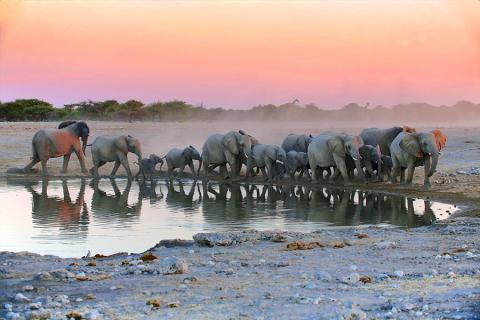
You have the opportunity to take both early morning and evening game drives, which are fantastic opportunities to see the local wildlife.
We headed out early as the sun rose across the desert and were rewarded with sightings of giraffes and ostriches, before doggedly following the tracks of the elephants along the riverbed. Eventually, we came to a huge male elephant tucking into his dinner at the side of the road. Being up close to such an imposing animal was an absolutely amazing encounter!
Keep your cool
After the morning game drive, you return back to the camp at about lunchtime where the aim of the game is to try desperately to keep cool - a virtually impossible task in the almost 40 degree heat of the desert! I found that lying under my bed was the only spot I that was even remotely comfortable – so I spent a good hour lying there reading, trying to escape the burning heat outside! Fortunately, the heat drops dramatically in the evenings which is so welcome and allows for a pleasant meal and a good night’s sleep.
Mowani Mountain Camp, Twyfelfontain
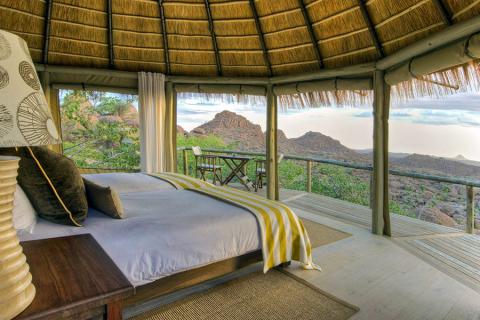
Although I enjoyed the rustic camping of the first part of the trip, I was over the moon to reach our next and final destination, Twyfelfontain for some relaxation in a hotel.
This area is home to beautiful, ancient rock art created over 2,000 years ago. We were taken for a guided walk and our guide interpreted the drawings which seem to highlight the nomadic nature of the artists, with rocks far in land showing depictions of of seals and marine life.
Why visit Namibia’s north?
Namibia is wild and under-developed, which is part of its charm. Whilst there are luxuries to be found, it’s worth knowing that to really experience some areas you, may have to ‘rough it’. This all adds to the wilderness experience (and I say that as someone who usually hates camping!).
I would highly recommend visiting the north of Namibia - it isn’t the easiest place to reach, but the sensation that you are the only people in the world is a truly mesmerising experience. The animals you’ll meet here display mild curiosity at visitors pointing their cameras and will happily stand and pose until you get the best shot! Of course, whilst you can’t guarantee sightings (they’re free to roam as they wish) - spotting them in their natural environment is spell-binding.
If you’ve previously visited South Africa, a trip to Namibia makes an interesting contrast; in both countries you’ll be able to look out for the ‘Big 5’ on safari but both the landscapes and the cultures are completely different.
How to do this trip
Flights
We can arrange direct flights into the capital, Windhoek, or you can see ideas for how Namibia can be included in a multi-stop ticket.
Accommodation
I stayed in the following properties – all of which we can book for you or find other accommodation to suit your style and budget:
- Hobatere Lodge, Etosha National Park – a tented lodge with a small swimming pool and a deck to watch the amazing sunsets.
- Mowani Mountain Camp, Twyfelfontain - built to complement the natural rock surroundings, with uninterrupted vistas, a swimming pool and one of the most beautiful spots for sundowners I have seen.
- Erongo Wilderness Lodge – another lovely and secluded tented lodge from where you can take interesting guided walks and spot local wildlife and birds
Interested?
We can tailor-make your trip to Namibia, whether you want to hire a car or campervan and self-drive for yourself, or whether you’d like us to tailor-make the arrangements. We can help you secure an appropriate hire vehicle that can cope with the roads on you chosen route, and recommend places to stay en route.
To start planning your Namibia trip, call us or request a quote by email.
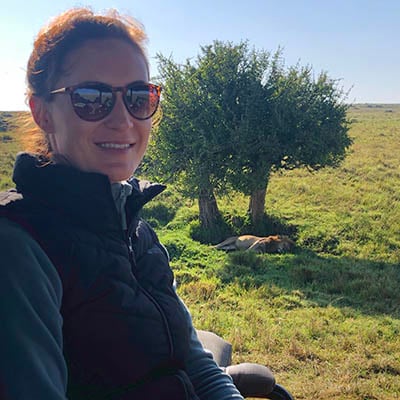
About the author Susan Horton
Travelling Friend
Susan grew up in Cumbria before heading out to Australia on a Working Holiday visa via some travel in south east Asia. Spending almost 2 years living in Australia she has travelled extensively there and in New Zealand and has returned to Australia several times since. She is also passionate about Africa and has recently taken safaris in South Africa and self-drives in Namibia. Susan joined Travel Nation in 2012 as a ground product consultant and now manages our Ground Product Team here in Brighton.
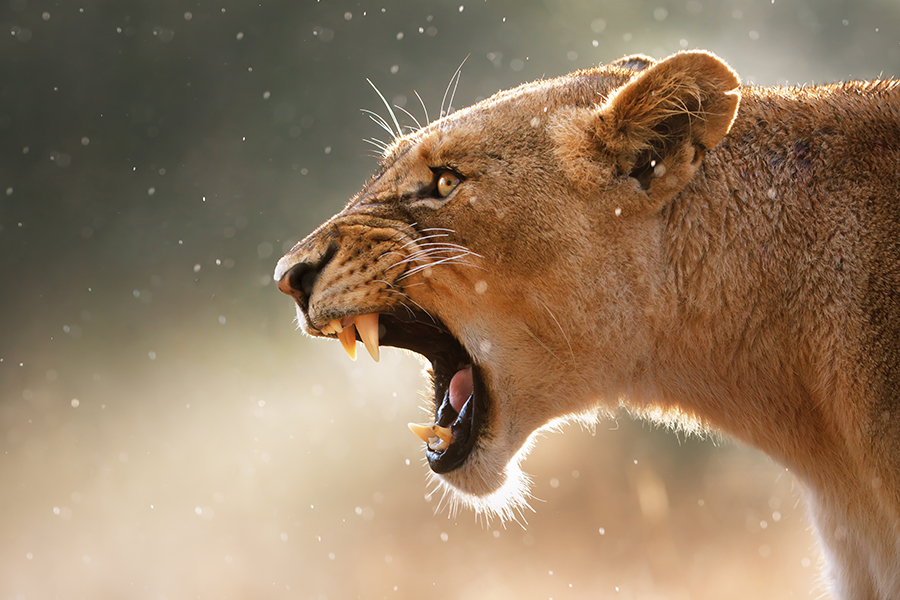
Last trip:
South Africa